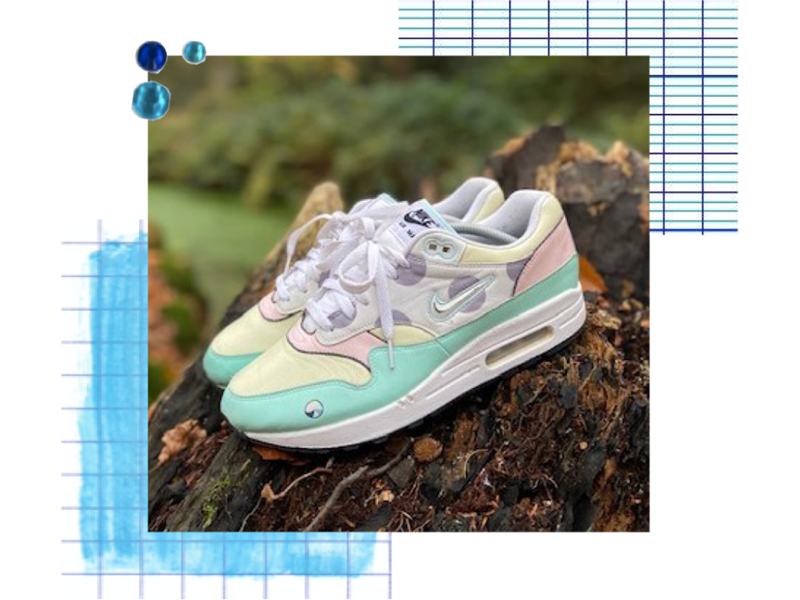During the pandemic, small businesses boomed. In London alone, the sector grew by 22% and in North-West England even 29%. Small fashion crafts businesses are letting their creative juices flow to create unique items that make you stand out from the crowd. In this series, Stitch Up! highlights some of our favourites. Michel, founder of Pattapimp Customs in Groningen, the Netherlands, breathes new life into old sneakers – making his customers a one-of-a-kind pair.
Where does the name Pattapimp come from?
‘Patta’ [a Suriname word] is used in the Netherlands as slang for ‘shoe’. And do you remember Pimp My Ride from MTV? People brought in their old cars and they would be completely transformed into something new. That’s literally what I do, but then for sneakers; I pimp them, breathing new life into something old.
Why did you start pimping sneakers?
It all started four years ago with me wanting to buy this pair of animal-print Nike Air Max. They were about €500 (£430), which I, as a student, couldn’t afford. Instead, I decided to try and replicate them myself; playing around with some fabrics and my mum helping me out. After that, I kept doing the same for friends and family and eventually more people found out about it and I could charge for the work. I finished my studies in communication last year and now I work at a supermarket three days a week for a steady income, but spend the other two working on my business.
What is the concept of Pattapimp Customs?
I do two things: people can send me their own sneakers and I’ll pimp them for them, but I also purchase second-hand shoes myself, pimp those, drop them on my Instagram page and whoever responds first can purchase them. The upcycled second-hand shoes usually sell for about €150 (£129) – still not very cheap, as I have to purchase them first but more affordable than what one-of-a-kind sneakers tend to go for. When people send me their own sneakers I charge around €50 (£43), depending on how difficult the design is. Customers contact me via DM and tell me what they’re looking for. This can be really specific or vague, but I’ll always check whether they like the design I come up with before going through with it. It’s easiest if someone knows what they want, but it’s more fun for me creatively if they don’t and I can come up with something from scratch.
What materials do you use?
For sneakers made from suede I use textile fabrics, which I purchase at the textile shop or I get a box of fabrics from the Weggeefhoek – where people bring in textiles they have leftover. I also have family living in Africa who sometimes bring me some fabrics when they come to visit. For leather sneakers I use paint; there’s plenty of websites for shoe maintenance where you can get that.
How long does it usually take you to finish one pair?
This really depends on how much work it is. If it’s only some small tweaks I can do that within a few hours, but if it’s very detailed it can take me up to two days. I try to work on two pairs a week, three if I do a pair of secondhand shoes as well. In the beginning, it was all very local and I only had customers in Groningen, but now it’s more national and I’ve even had someone from Belgium. For local customers, I usually drop the shoes off myself.
What tip would you give to someone who wants to upcycle their own sneakers?
Stay unique; don’t try to copy what others have made. Your own creativeness is special and would be most appreciated by others. And if you’re not a creative person at all, don’t do it yourself, bring your sneakers to someone else who offers that service.
What role does sustainability play for Pattapimp?
At first, it was more about making exclusive sneakers more accessible, because they’re so expensive. When it all got more serious I started to see sustainability as a selling point; because pimping old shoes is much better than throwing them out and buying a new pair.
What are your future plans for Pattapimp?
I hope to make a living off this, but I need to offer more options and improve in quality to do that. I want to open up my own shop at some point. For now though, I’m adding some merchandise to my brand, such as T-shirts with my logo on them.


 (@pattapimpcustoms)
(@pattapimpcustoms)